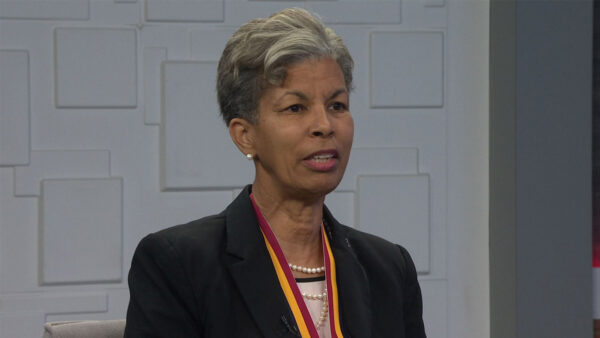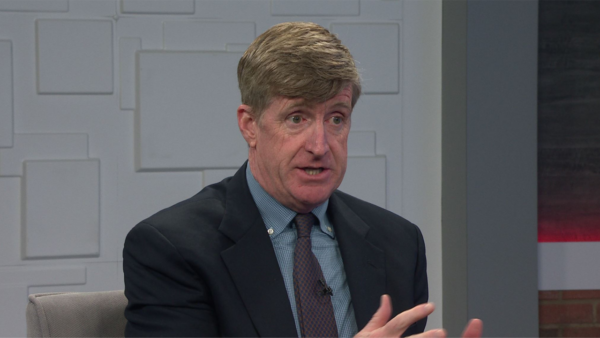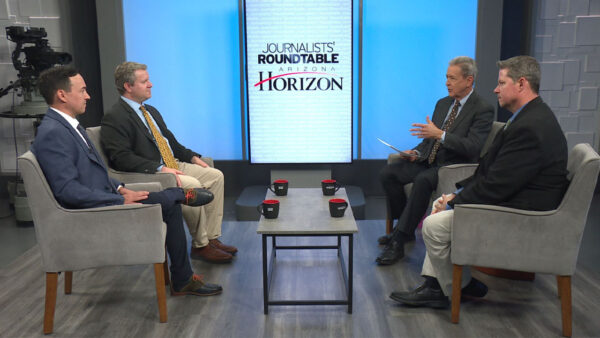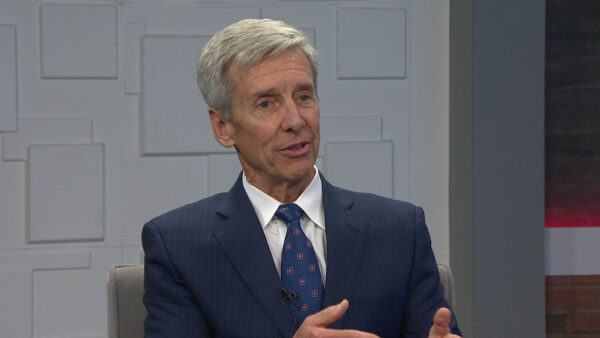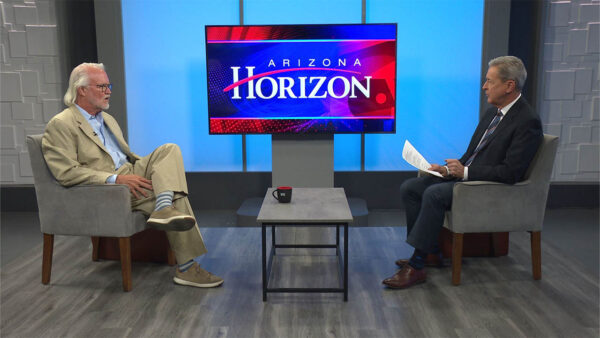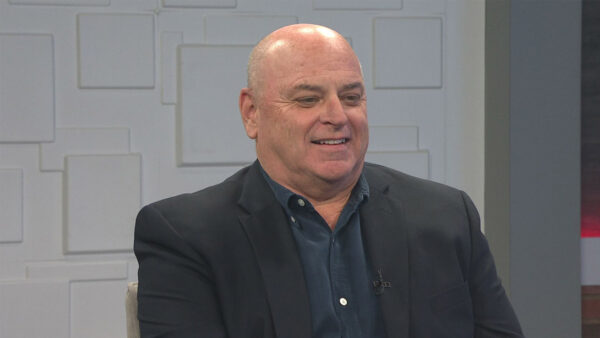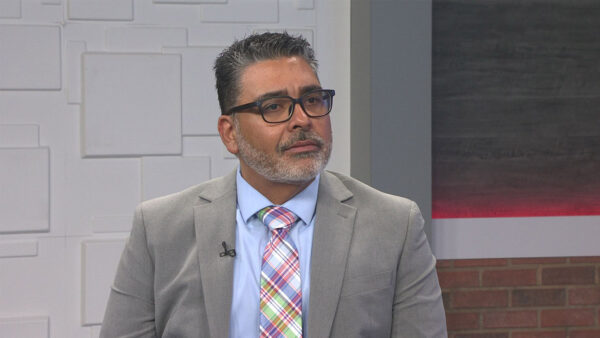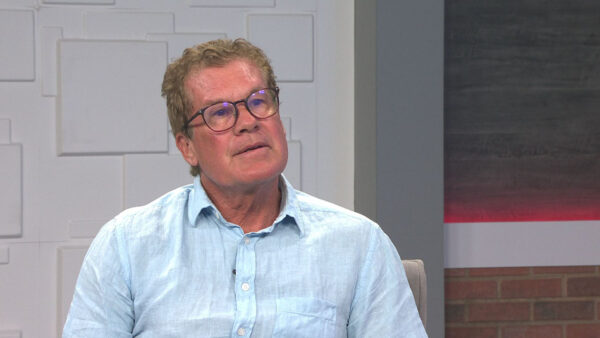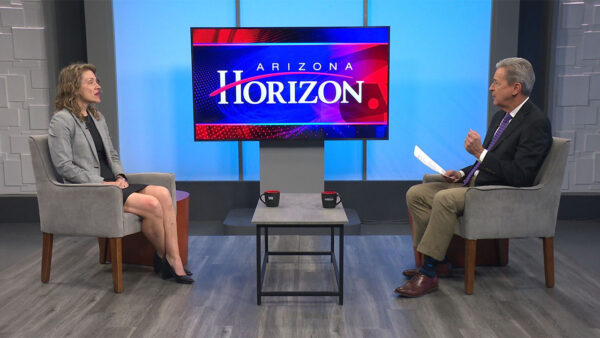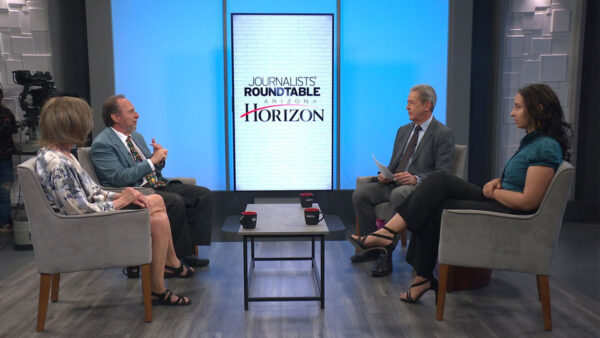A move to reduce renewable energy standards for APS by the Arizona Corporation Commission has been tabled, but incentives for large commercial solar power projects have been cut. Commissioner Gary Pierce will discuss the commission’s stance on renewable energy.
Ted Simons: The Arizona corporation commission voted last week to cut incentives to developers of large solar projects in areas covered by APS and Tucson electric power. We'll hear from a member of the commission, but first, a rally opposing the changes was held this week in front of the commission's headquarters.
Katie Radosevic: Commissioners Gary pierce, Glenda burns, Susan bitter Smith and bob burns all voted to eliminate key solar programs for customers of Arizona public service and Tucson electric power. Two of Arizona's largest utility companies. Specifically the ACC voted to cancel all commercial sow LAN programs and significantly reduce residential solar incentives. With this decision, the commission effectively pulled the rug out from underneath an otherwise promising industry. But it isn't just the solar industry that's hurt by a decision like this. It is now harder for businesses and homeowners to go solar in Arizona. The sunniest state in the country. What's more, it's our health and the growth of green jobs in Arizona that will also suffer. The fact is, Arizona should be the solar capital of the world. Arizonans know this. The governor knows this.
Ted Simons: Joining me now to talk about the changes to the program is commissioner Gary pierce. Performance-based solar incentives for commercial systems and residential as well. Why the changes?
Gary Pierce: Well, we've been changing every year. Remember, we consider ourselves friends of solar. We keep these programs moving forward. And in Arizona, in fact, the production based incentives or performance-based incentives -- -- we're going to call those PBis, were way over our compliance heading towards 15% by 2025. And so because of that, and because we're at year 2019 as far as compliance, we think it's not fair to ratepayers to keep plunging ahead when we've been lowering them every year and we simply did that again this year, but the natural point this year is to zero. The utility said we should have been zero last year, so this is not a surprise. The APS suggested it six months ago. So they all knew the potential was there.
Ted Simons: The idea with performance based especially for commercial, but with residential as well, even up front commercial incentives as well, the incentives are there to eventually go away. What I hear from the industry is, what you're doing now is cutting off at the knee. A set of a -- Instead of a soft landing we're getting a hard landing.
Gary Pierce: we went to zero. But we were virtually there already at the end of the year. On residential, we started the year at 70 cents and moved all the way down as production increased, we moved down to 10 cents per watt is our measure. And we are $4 a watt when we started this five years ago. So you go to three -- 10 cents a watt, so we started this year at 10 cents a watt. And that's where we're going to be throughout the year. But if we run out of money we'll be to zero. But they're ready for that. I looked at the video you just played, I don't know any of those people on the screen. They're not the solar folks that talk to us and work out these concepts we need to move forward with.
Ted Simons: The solar folks we've talked to, eye assuming some of the folks you've talked to, they're saying again, they are making that increase, you're talking about improvements, they are making the improvements as well, they're 80% was the number mentioned. Why not let it continue if it's going so well, why again the abrupt change?
Gary Pierce: Again, you say abrupt change. These are schedules on down. We look to be at five years in the discussion of the renewable energy plans from the start. We won't need anything after five years. And it really worked out that way. We kept residential up because we're not that much overcompliance with residential. But we're already to the 2015 mark. So we're building more -- If you think about it, these were created in 2006, the economy was booming and then the economy took a dive and we have slag growth. For us to say we need more energy when we're not growing, any kind of energy, is a stretch. So what's fair to ratepayers is to get them off these incentives. And they're ready to do it.
Ted Simons: But the elimination, I'm going to tell you what they're telling me, and what I'm hearing from them, the elimination of these performance-based solar incentives, they're saying that effectively kills commercial solar in Arizona. Are they wrong?
Gary Pierce: Yes, they're wrong. And there are installers who will tell you and we'll probably bring them together, I just got approval from Tucson electric power for a 500KW project. The day after the vote last week. And he said, by the way, I haven't offered incentives for nine months. So they've been coming down, he said I haven't needed them. He says I will double my business in 2013. So I think there's a lot of -- A lot to do about nothing here and the proof will be in the pudding. Just last year, we had more power -- Virtually more power added to the renewable energies power added more than the previous four years combined virtually. So it's working.
Ted Simons: You have a success story there but again, there may be other businesses out there or perhaps not, who are -- But they're saying, we could be losing jobs, we could be losing contracts because of the lack -- This incentive, we need it for now, they're saying we don't want it in the future but we need it now.
Gary Pierce: The businesses that maybe are going to release -- Let people go, those people will go to the ones who are -- Their model shows they can make it. I don't want to say that these folks are totally relying on a government subsidy. I hope they don't want to say that. But the reality is, it's time for that subsidy on the performance-based incentive to go away. Because that's a legacy cost. The legacy cost means those performance-based incentives, they're performanced-based. We've built up in APS's territory, 735 million dollars of legacy costs, which will go on. People will say, there's no more incentives, will my bill go down. No, we have created through these rules, which were created in 2006, we've created a monster of additional charges that will have to be paid over the next 20 years.
Ted Simons: Is the monster tamed when the solar industry is strong enough to where it not only needs incentives, it can go past them?
Gary Pierce: I think the reality is, the commercial side needs to say we'll do it for 10 cents a watt, the same as residential, we don't need -- They're getting more than residential. We'll do it for the same as residential and propose that plan. If they're not in compliance. But they're so far overcompliance right now. I think that's an abuse of the ratepayers who said, we want more renewable energy, and I agree. But it needs to be when we need that energy.
Ted Simons: You mentioned the ratepayers. I've heard taxpayer savings for these elimination and reductions is all of two to six cents a month. Is that accurate?
Gary Pierce: For maybe this year. But remember, those millions of dollars of legacy costs will kick the numbers up. We're talking about this year adding it on. So it won't hit so much this budget year. It's future budget years.
Ted Simons: The residential -- Renewable energy standard, 15%, 20, 25, did you try to lower that? Did you try to get an amendment passed to lower that?
Gary Pierce: What I did, I had an amendment -- I didn't actually make the motion for it. But I wanted everybody to see it. Because actually I have a copy of an amendment we ran -- With the first implementation plan for the water company. Primarily a -- At the time of Phelps dodge mine and a couple thousand residences, 15% was going -- Wasn't going to work. Most of the energy was at the mine. 98% of the energy. So the costs of that surcharge to everybody was going to be astronomical. So commissioner mayes ran an amendment to take away all that generation and do it based on the residential. So we're getting 15% based on 2% of the power over time. So it's nothing new. But I want people to understand, we already don't -- Aren't able to count Davis Maupin, they have all renewable -- A lot of renewable energy but the -- TEP can't count it as though the 15%. So we have a mismatch of concepts. We really need the industry. When I offered this amendment, I told the industry, I'm not going to make this motion, I want you to think about it. Let's get our heads together and work together to develop a plan so we're not beating on up ratepayers.
Ted Simons: So your critics who say you tried to slip it in --
Gary Pierce: that's ridiculous.
Ted Simons: Last question, you say you're a friend of solar, the commission is a friend of solar. With all of this going on, how do you convince folks you are? Because some would say if you listen to all this, doesn't sound like a friend of solar.
Gary Pierce: They have to look at history. If they're just looking at today, if you were listening a year ago, we cut solar. But we got more solar than really virtually any three years combined. But the proof is not with them.
Ted Simons: All right. It's good to have you here. Thanks for being on the program.
Gary Pierce:Commissioner, Arizona Corporation Commission;





